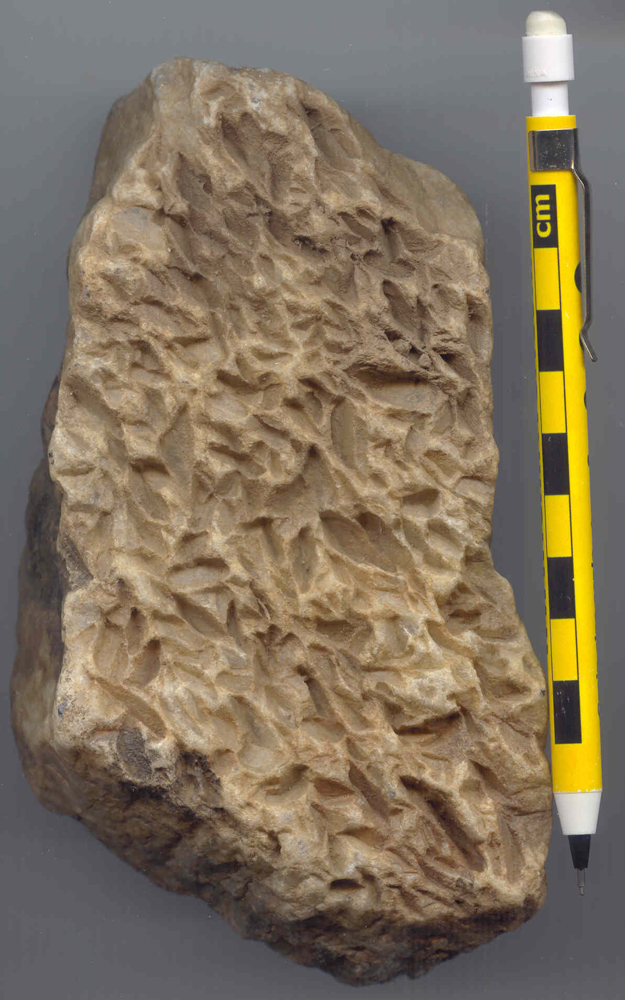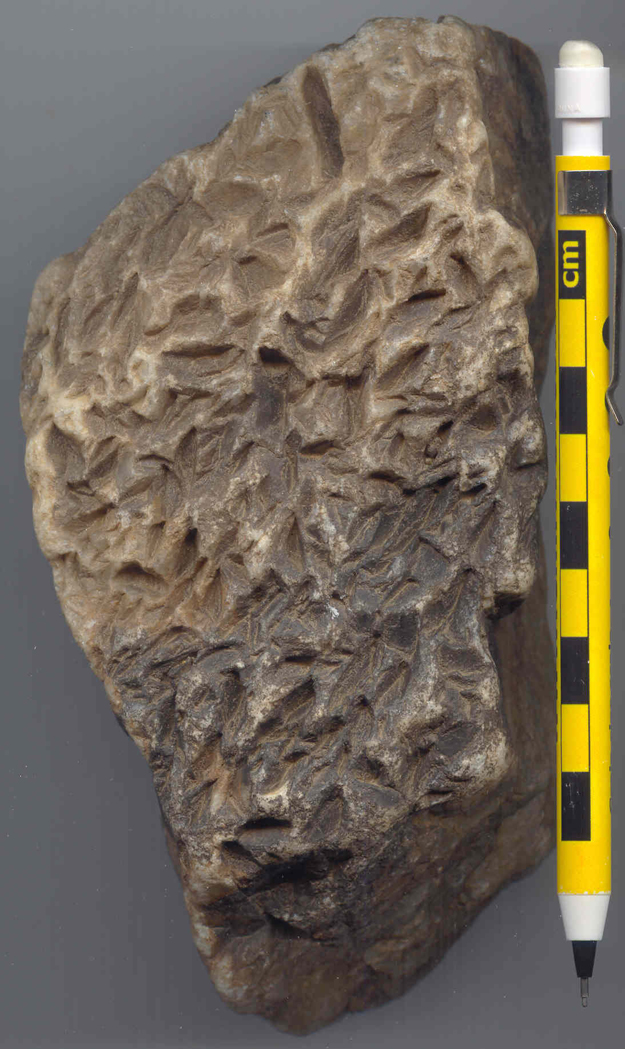Here’s a piece of vein quartz with a series of interesting “cubist disc” shaped holes in it. I interpret these cavities as external molds of some mineral which has now been physically removed or chemically weathered away. So only its exterior shape remains, and I wonder if that’s enough to identify the mineral that used to be here. Both images below can be enlarged by clicking on them:
And the other side; same sort of impressions:
The cobble of vein quartz was found in the Virginia Piedmont, but it could have originated anywhere.
Anyone have any idea what these might be?



My gut feeling is that they are calcite casts, possibly some of dogtooth spar. But that’s only an educated guess.
Interesting – that was the “shape recognition” that my brain came up with too, but I couldn’t square (in my head) the co-existence of vein quartz and dogtooth calcite. Is that a common (or at least possible) co-occurrence?
Quartz and calcite in the same veins isn’t that odd. I feel like I have similar molds from a skarn in Nevada. That should have silicate and carbonate rich fluids in veins.
Why not measure the crystal angles of a few of the best-defined cavities and see if that provides a clue?
I made a negative image of both. It provided a pseudo image of the crystals and was easier to look at than the molds. In image 2, one “crystal” looks like bladed calcite. On both images, quite a few “crystals” look to be rhombohedral, suggesting dolomite.
Does look likely to be a carbonate, and I wondered if inverting the image might make the molds clearer. You might also try to get casts with putty, clay or Play-do.
I’m with those who suggest calcite. That’s the first thing that popped into my head, too. We could be looking at two stages of vein filling: an early stage in which calcite crystals grew on the walls of an open fracture, followed by a later stage of quartz that completely filled the fracture.
This is a pretty common scenario in oil & gas reservoirs at a microscopic scale, where we can see several different cementing minerals (e.g. quartz, dolomite, calcite, anhydrite) precipitated in the pores in sequential stages, presumably due to changes in pore water chemistry over time.
I agree with calcite or other carbonate. Calcite and quartz can occur together; quartz can replace calcite making a particular texture often called “bladed quartz replacing calcite.” Your rock is vaguely reminiscent of that texture.